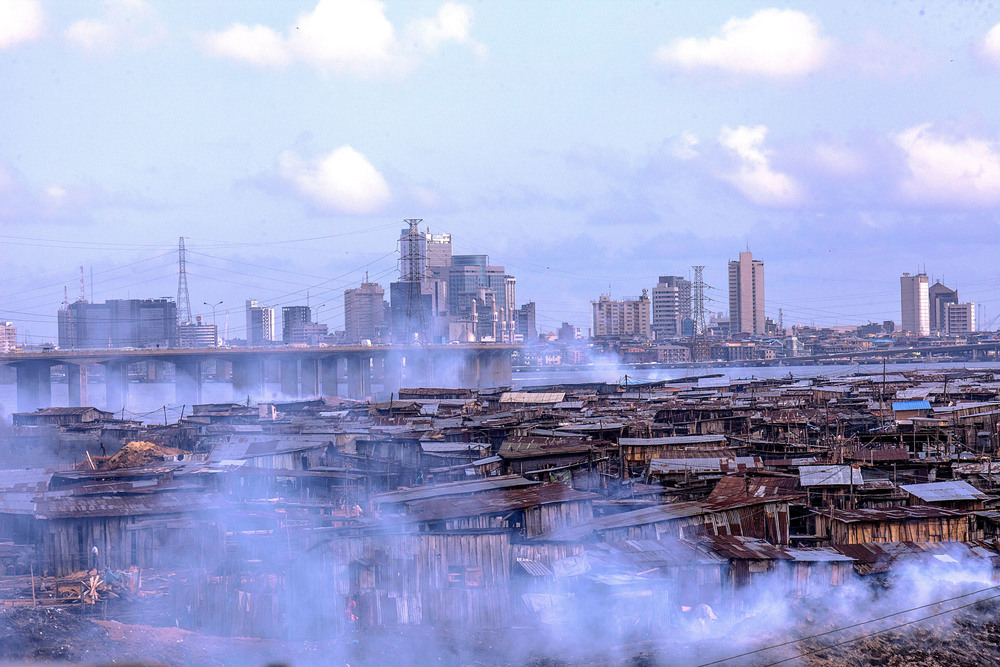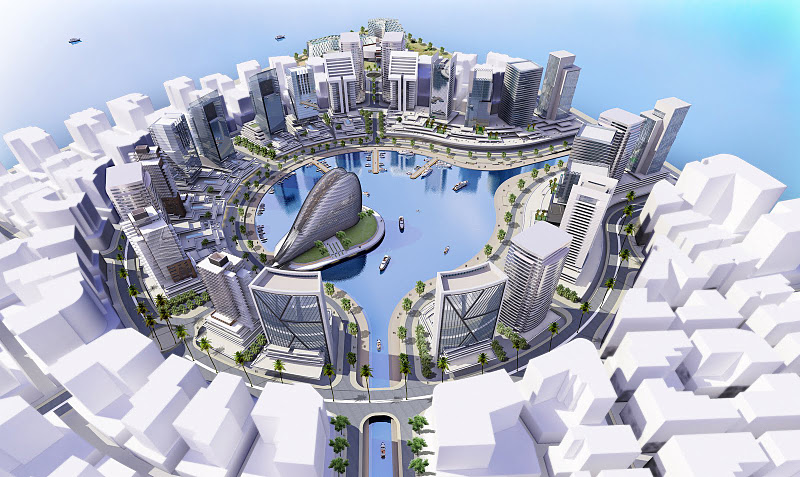Like many other African cities, it is getting increasingly harder to find a place to live in Lagos.
Housing shortages have become commonplace in development studies of the Global South. More recent inquiries in this field have focused on urban informals; that is, housing, transactions, economy – life in general – outside of legal building and planning codes and regulatory framework (Ogunnaike et al., 2013). Informal housing constitutes a large proportion of living space in Global South cities, and city governments, planners, and policymakers must choose how to deal with urban informality as they plan for future growth in the midst of housing crises. In many cases, attempted solutions are drawn from public-private partnerships and neoliberal ideology to solve shortages. In the case of Lagos, Nigeria, infrastructural upgrades and access to affordable housing have been complicated by both global capital interests and urban informality.
Lagos is a rapidly growing mega-city in southwest Nigeria. More than half a million people move to Lagos every year, and in only half a century, the port city has grown from 300,000 to over 17 million. It is the economic capital of a nation whose growth is projected to double by the year 2050 (Population Reference Bureau, 2015). It has become Africa’s largest city, and has been increasingly seen as the continent’s financial capital. Housing the population is a substantial challenge: the shortage of housing stock in Lagos state has climbed to over 5 million units (Ogunnaike et al., 2013) and state and federal governments are pressed for solutions. Many of these have involved cutting rental fees for lower income tenants and trying to establish public-private partnerships and mortgage finance, but to no avail (Ogunnaike et al., 2013). With 2,000 residents moving to the city each day (Ogunlesi, 2016), informal settlements and slums have become the housing norm.

Another problematizing factor is the availability of land. Lagos is a sprawling megacity that has become subject to slum evictions, demolitions, and displacements as new middle income housing solutions take over. Developers have turned to creative and innovative approaches to solve an intersection of urban challenges: a massive land reclamation project, Eko Atlantic, has added over 10 million square meters to the urban landscape, promising to provide office space, a new central financial district, and 250,000 housing units for middle-class workers (Eko Atlantic, 2017). Due to its high amount of foreign investment, this neoliberal ideal turns the local housing problem into a global mechanism of property consumption.
“Eko Atlantic is an entire new coastal city being built on Victoria Island adjacent to Lagos, Nigeria, to solve the chronic shortage of real estate in the world’s fastest-growing megacity.” – Eko Atlantic, 2017
This isn’t the first appearance of an urban “seascape” in Lagos: historically, traders of the Lagos Lagoon have sought the ocean as a viable living space. Low-income residents of the Makoko/Iwaya neighbourhood, largely comprised of fishermen, construct houses on stilts and use boats for transportation in what has been coined as the “Venice of Lagos” (Udoma, 2014). As populations grow, sustainable infrastructure is a major concern for the aquatic neighbourhood: housing collapse, lack of services, and flooding are regrettable legacies. Several NGOs have proposed solutions, but have lacked serious consideration by political elites, unlike Eko Atlantic.
This blog investigates the appeal of claiming the ocean as urban living space in Lagos, examining the development of seascape infrastructure – both formal and informal – as polarizing urban fabrics. We summarize the development of both Makoko and Eko Atlantic and evaluate them based on how they provide equitable, sustainable, and durable living spaces for Lagosians.
Header Photo: http://www.ekoatlantic.com/media/image-gallery/
Sources:
Eko Atlantic (2017). About Eko Atlantic [online] Available at http://www.ekoatlantic.com/about-us/
Ogunlesi, T. (2016). Inside Makoko: danger and ingenuity in the world’s biggest floating slum. [online] The Guardian. Available at https://www.theguardian.com/cities/2016/feb/23/makoko-lagos-danger-ingenuity-floating-slum
Ogunnaike, A., Squires, G., Booth, C.A. (2013). A pluralistic conceptual model for affordable housing in Lagos, Nigeria. WIT Transactions on Ecology and the Environment, 179, 523-533. Available at http://search.proquest.com.ezproxy.library.ubc.ca/espm/docview/1790973819/A32271DC0BB243E2PQ/1?accountid=14656
Population Reference Bureau (2015). 2015 World Population Data Sheet. [online] Available at http://www.prb.org/pdf15/2015-world-population-data-sheet_eng.pdf
Udoma, O. (2014). Makoko: ‘Venice of Lagos’. [online] Sustainable Cities Collective. Available at http://www.sustainablecitiescollective.com/futurecapetown/241671/makoko-venice-lagos
